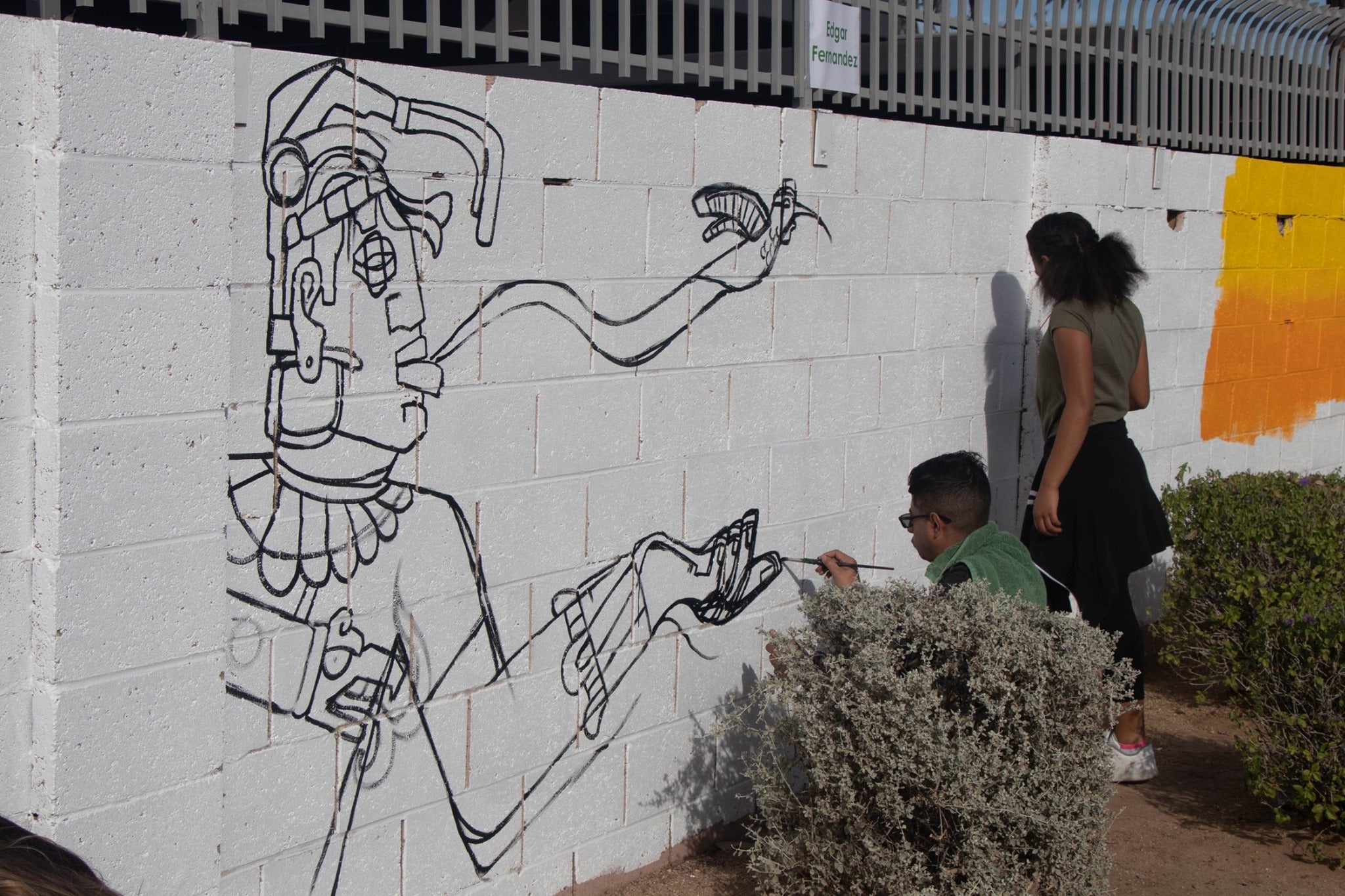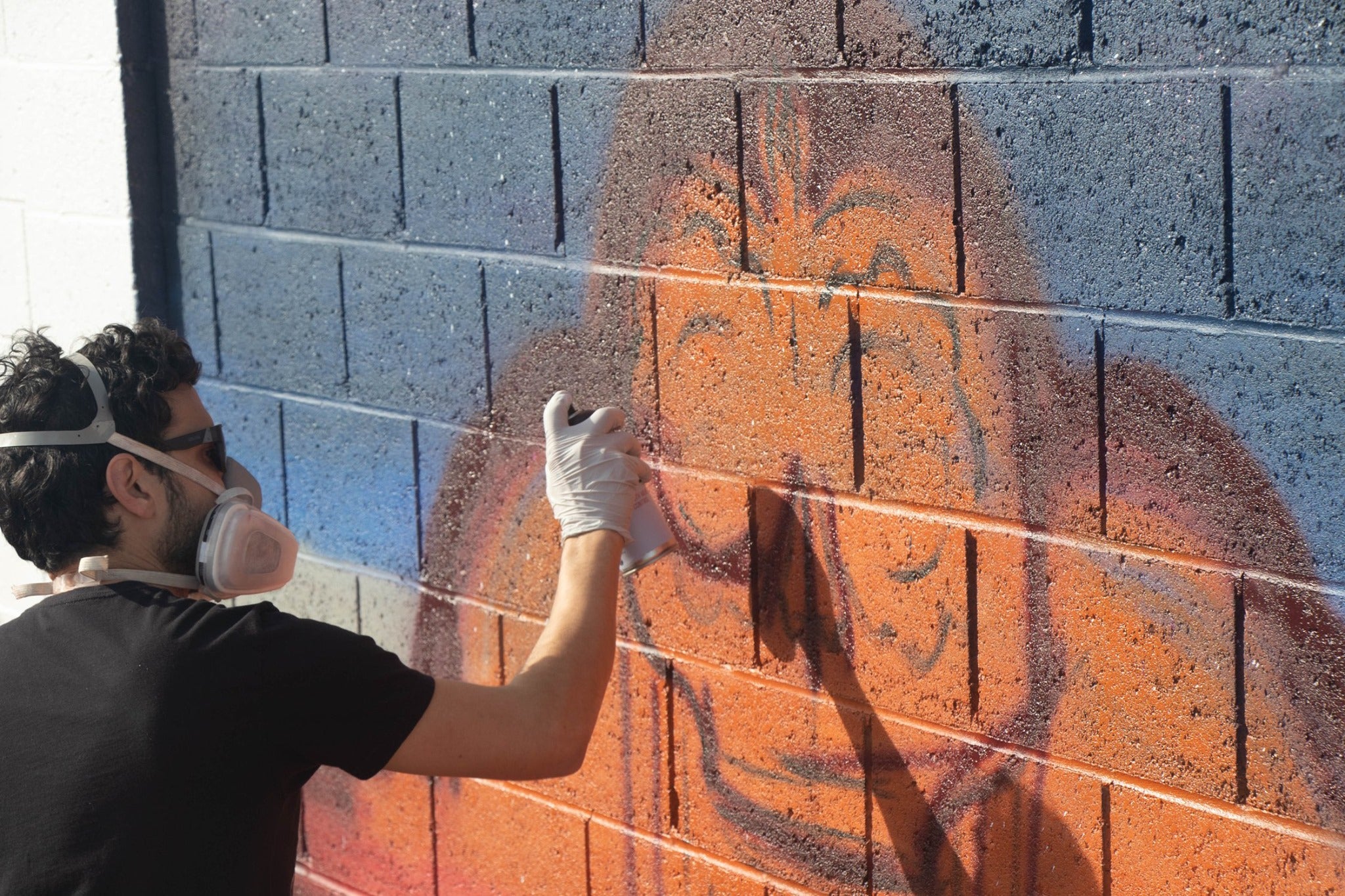ASU Hugh Downs School awarded $10,000 to study loneliness and isolation

A mural at Guerrero Rotary Park in Mesa inspired by a Storyscope Project. Photo courtesy of Arizona Urban Land Institute
Faculty and graduate students from the Hugh Downs School of Human Communication were awarded $10,000 from the Tempe Community Council (TCC), an agency of United Way and a partner of the city of Tempe, for its Storyscope Project, a storytelling format that fosters inclusiveness and cultivates connections and compassion.
The Tempe community was invited by the TCC to submit their innovative solutions to help alleviate isolation and loneliness by strengthening connections between people in Tempe as part of its first-ever Connector Award. Award amounts ranged from $500 to $50,000.
Jennifer Linde, a Hugh Downs School principal lecturer and artistic director of The Empty Space, submitted the Storyscope Project for consideration and was one of five projects awarded funding. Storyscope will partner with Unity of Tempe to complete the project.
“The Storyscope Project allows everyone involved to express their unique stories, make connections, feel a sense of belonging and participate in inclusive communities,” Linde said.
Linde’s team included Hugh Downs School doctoral students Lauren Mark, Rob Razzante, Tyler Rife and school alumnus and civil communication research fellow, John Genette. The school partnered with Rev. Linda Park-Fuller, a former assistant professor of performance studies at the Hugh Downs School.
Linde says the Storyscope Project will make a difference and reduce isolation in two ways.
“First, the Storyscope Project creates connection through story sharing,” she said. “Humans are natural storytellers. Sharing and listening to other’s experiences is one way people develop connections with others.”
“Second, by collecting empirical data, we can do research to pinpoint exactly where connections are being made. With this knowledge, we can more effectively advocate storytelling and sharing as inclusive communication and a means to reduce social isolation.”

Community members participated in the mural project at Guerrero Rotary Park in Mesa. Photo courtesy of Arizona Urban Land Institute.
Linde says quantitative and qualitative data will be gathered through post-Storyscope surveys, interviews, and focus groups. Data analysis will be conducted by members of the I-4C research collaborative at the Hugh Downs School. The school is further supporting this initiative by providing an internal seed grant of $5,000.
Phase one of the Storyscope Project, which includes training story circle facilitators, making community contacts and planning and scheduling Storyscope events, is already underway.
Ideally, Linde would like the Storyscope project to be utilized by any organization seeking to generate connections and address the problem of social isolation and loneliness.
Recently Linde and Genette were asked by the Mesa Arts Center to hold a Storyscope event to help gather stories from the community to create murals in Guerrero Park. The project was funded by the Urban Land Institute, whose stated mission is to “strengthen communities through supporting art and culture in neighborhoods.”
“John and I offered the Storyscope process to the organizers so that community members could share their stories with the mural artists,” Linde said. “The intent was for the artists to listen to the stories and turn their words into art.”

An artist creating a mural inspired by stories of community members at Guerrero Rotary Park in Mesa. Photo courtesy of Arizona Urban Land Institute
In the end, 12 mural artists crafted a 270-foot long mural collaborating with about 250 community members of all ages to implement the project.
“We are excited that the Storyscope project is a part of local communities like Mesa and Tempe and that people are finding ways to share their stories with others,” Linde said.